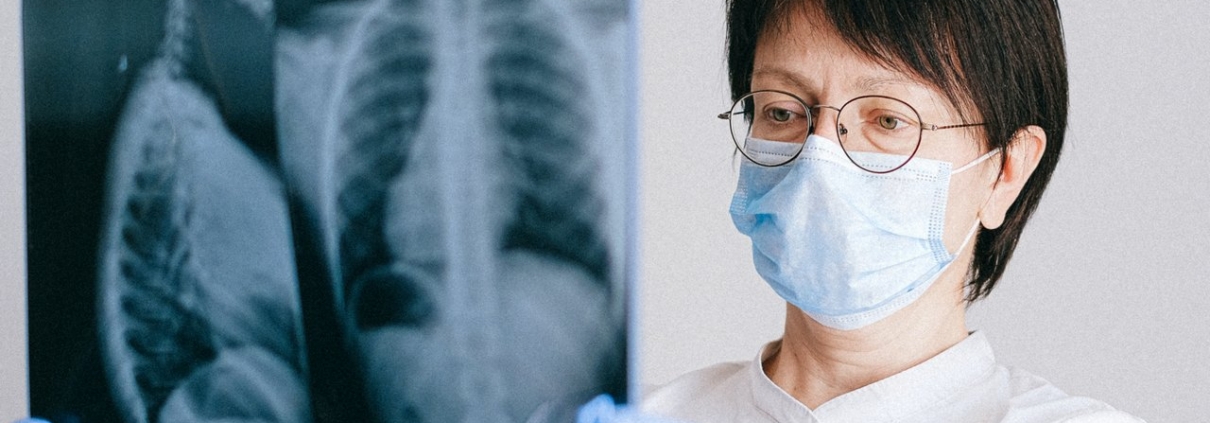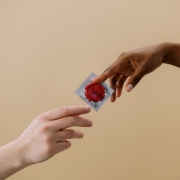Tuberculosis
Tuberculosis (TB) is caused by bacteria (Mycobacterium tuberculosis) that most often affect the lungs. Tuberculosis is curable and preventable.
TB is spread from person to person through the air. When people with lung TB cough, sneeze or spit, they propel the TB germs into the air. A person needs to inhale only a few of these germs to become infected.
About one-quarter of the world’s population has a TB infection, which means people have been infected by TB bacteria but are not (yet) ill with the disease and cannot transmit it.
People infected with TB bacteria have a 5–10% lifetime risk of falling ill with TB. Those with compromised immune systems, such as people living with HIV, malnutrition or diabetes, or people who use tobacco, have a higher risk of falling ill.
When a person develops active TB disease, the symptoms (such as cough, fever, night sweats, or weight loss) may be mild for many months. This can lead to delays in seeking care, and results in transmission of the bacteria to others. People with active TB can infect 5–15 other people through close contact over the course of a year. Without proper treatment, 45% of HIV-negative people with TB on average and nearly all HIV-positive people with TB will die.
Who is most at risk?
Tuberculosis mostly affects adults in their most productive years. However, all age groups are at risk. Over 95% of cases and deaths are in developing countries.
People who are infected with HIV are 18 times more likely to develop active TB (see TB and HIV section below). The risk of active TB is also greater in persons suffering from other conditions that impair the immune system. People with undernutrition are 3 times more at risk. Globally in 2019, there were 2.2 million new TB cases in 2018 that were attributable to undernutrition.
Alcohol use disorder and tobacco smoking increase the risk of TB disease by a factor of 3.3 and 1.6, respectively. In 2019, 0.72 million new TB cases worldwide were attributable to alcohol use disorder and 0.70 million were attributable to smoking.
Global impact of TB
TB occurs in every part of the world. In 2019, the largest number of new TB cases occurred in the WHO South-East Asian region, with 44% of new cases, followed by the WHO African region, with 25% of new cases and the WHO Western Pacific with 18%.
In 2019, 87% of new TB cases occurred in the 30 high TB burden countries. Eight countries accounted for two thirds of the new TB cases: India, Indonesia, China, Philippines, Pakistan, Nigeria, Bangladesh and South Africa.
Symptoms and diagnosis
Common symptoms of active lung TB are cough with sputum and blood at times, chest pains, weakness, weight loss, fever and night sweats. WHO recommends the use of rapid molecular diagnostic tests as the initial diagnostic test in all persons with signs and symptoms of TB as they have high diagnostic accuracy and will lead to major improvements in the early detection of TB and drug-resistant TB. Rapid tests recommended by WHO are the Xpert MTB/RIF, Xpert Ultra and Truenat assays.
Diagnosing multidrug-resistant and other resistant forms of TB as well as HIV-associated TB can be complex and expensive.
Tuberculosis is particularly difficult to diagnose in children.
Treatment
TB is a treatable and curable disease. Active, drug-susceptible TB disease is treated with a standard 6-month course of 4 antimicrobial drugs that are provided with information and support to the patient by a health worker or trained volunteer. Without such support, treatment adherence is more difficult.
Since 2000, an estimated 63 million lives were saved through TB diagnosis and treatment.
TB and HIV
People living with HIV are 18 (15-21) times more likely to develop active TB disease than people without HIV.
HIV and TB form a lethal combination, each speeding the other’s progress. In 2019, about 208 000 people died of HIV-associated TB. The percentage of notified TB patients who had a documented HIV test result in 2019 was 69%, up from 64% in 2018. In the WHO African Region, where the burden of HIV-associated TB is highest, 86% of TB patients had a documented HIV test result. Overall in 2019, 88% of TB patients known to be living with HIV were on ART.
WHO recommends a 12-component approach of collaborative TB-HIV activities, including actions for prevention and treatment of infection and disease, to reduce deaths.
Multidrug-resistant TB
Anti-TB medicines have been used for decades and strains that are resistant to one or more of the medicines have been documented in every country surveyed. Drug resistance emerges when anti-TB medicines are used inappropriately, through incorrect prescription by health care providers, poor quality drugs, and patients stopping treatment prematurely.
Multidrug-resistant tuberculosis (MDR-TB) is a form of TB caused by bacteria that do not respond to isoniazid and rifampicin, the 2 most effective first-line anti-TB drugs. MDR-TB is treatable and curable by using second-line drugs. However, second-line treatment options are limited and require extensive chemotherapy (up to 2 years of treatment) with medicines that are expensive and toxic.
In some cases, more severe drug resistance can develop. TB caused by bacteria that do not respond to the most effective second-line anti-TB drugs can leave patients without any further treatment options.
In 2019, MDR-TB remains a public health crisis and a health security threat. A global total of 206 030 people with multidrug- or rifampicin-resistant TB (MDR/RR-TB) were detected and notified in 2019, a 10% increase from 186 883 in 2018. About half of the global burden of MDR-TB is in 3 countries – India, China and the Russian Federation.
Worldwide, only 57% of MDR-TB patients are currently successfully treated. In 2020, WHO recommended a new shorter (9-11 months) and fully-oral regimen for patients with MDB-TB. This research has shown that patients find it easier to complete the regimen, compared with the longer regimens that last up to 20 months. Resistance to fluoroquinolones should be excluded prior to the initiation of treatment with this regimen.
In accordance with WHO guidelines, detection of MDR/RR-TB requires bacteriological confirmation of TB and testing for drug resistance using rapid molecular tests, culture methods or sequencing technologies. Treatment requires a course of second-line drugs for at least 9 months and up to 20 months, supported by counselling and monitoring for adverse events. WHO recommends expanded access to all-oral regimens.
By the end of 2019, 89 countries started using shorter MDR-TB regimens and 109 had imported or started using bedaquiline, in an effort to improve the effectiveness of MDR-TB treatment.
Source: WHO.









